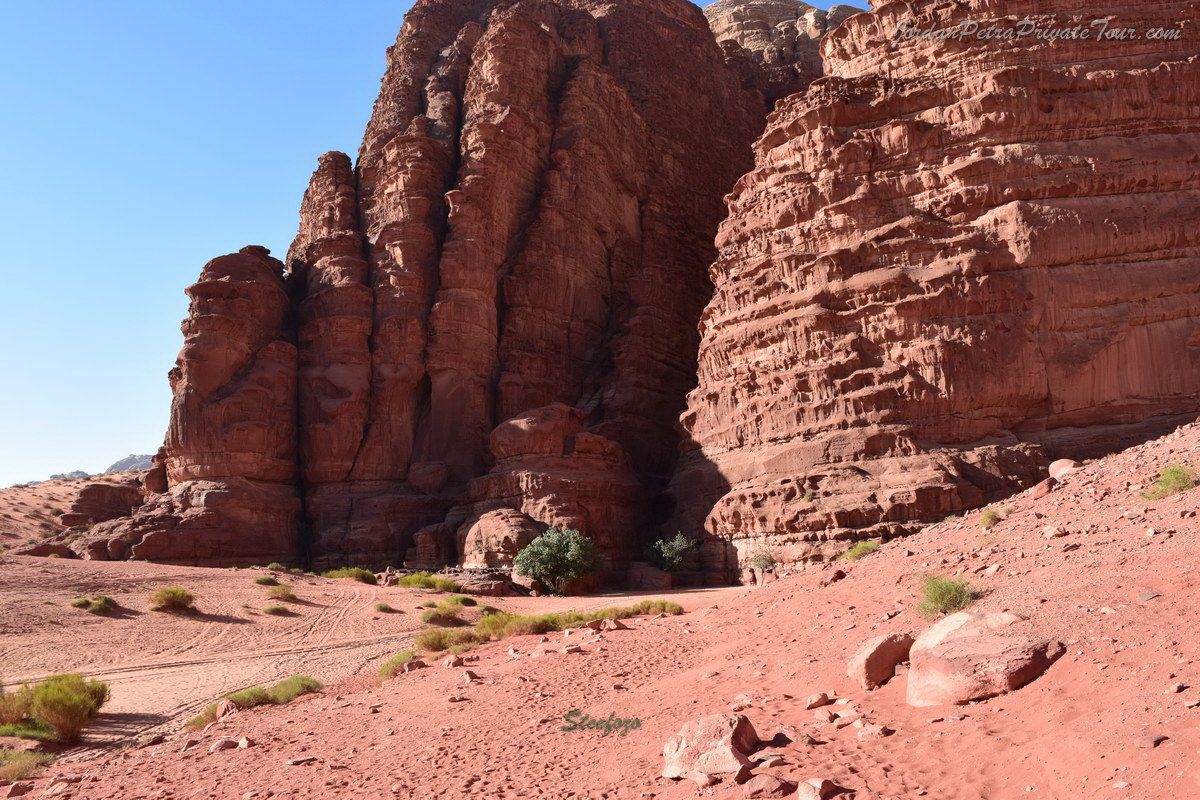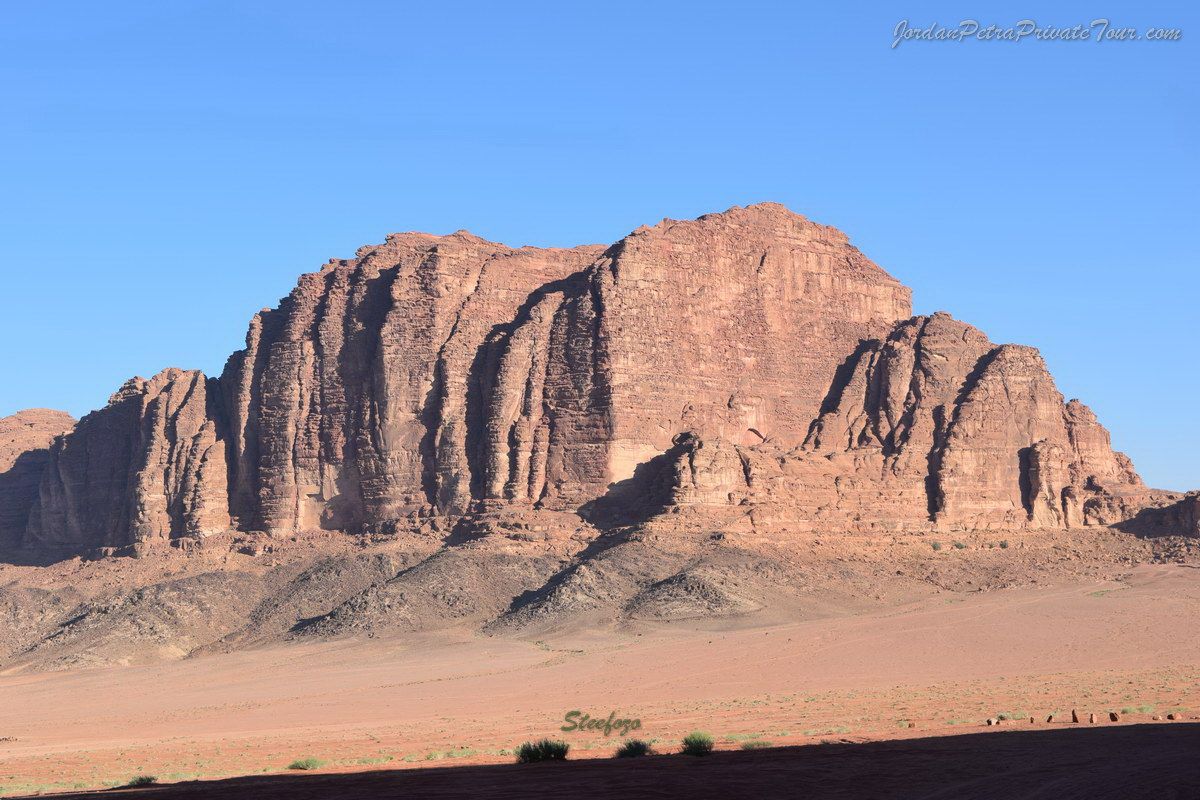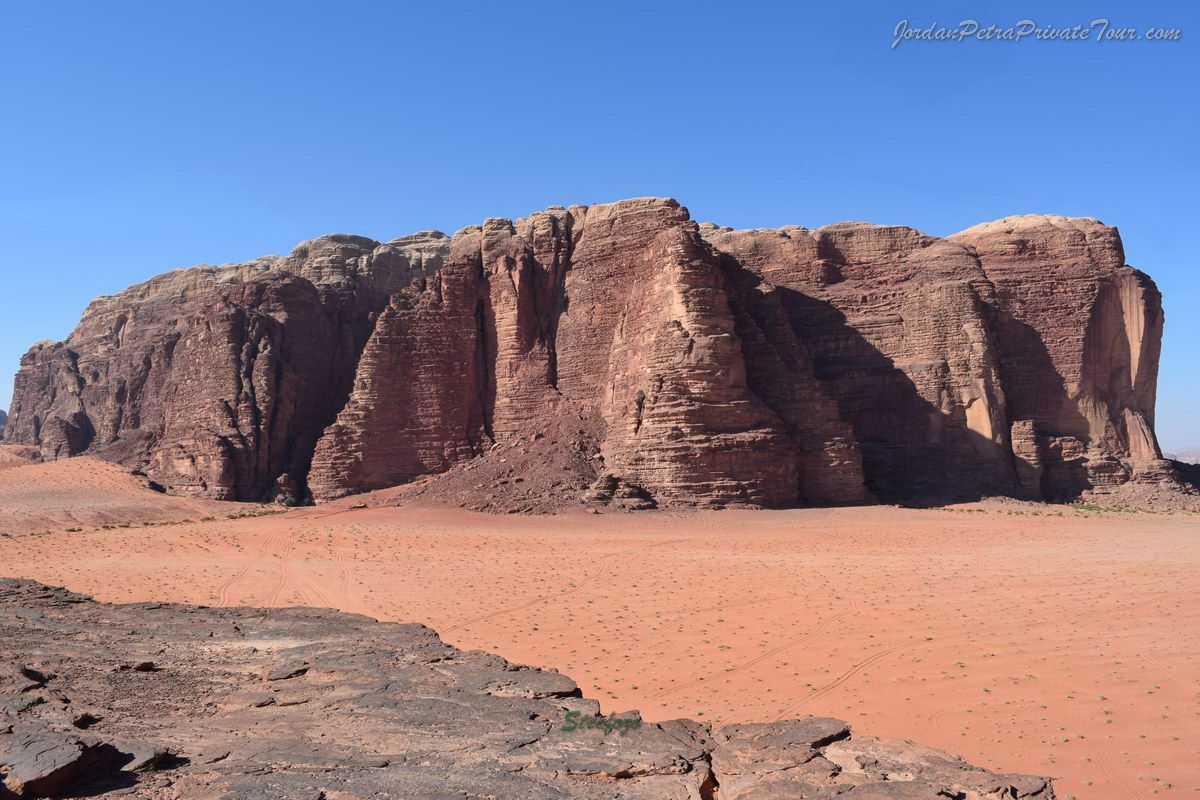Record added successfully



Wadi Rum also known as The Valley of the Moon is a valley cut into the sandstone and granite rock in southern Jordan 60 km (37 mi) to the east of Aqaba; it is the largest wadi in Jordan.
The name Rum most likely comes from an Aramaic root meaning high or elevated .To reflect its proper Arabic pronunciation, archaeologists transcribe it as Wadi Ramm .
This series of valleys covered in softly colored sand, punctuated by huge, imposing, fantastically shaped jebels, is one of the most memorable destinations in Jordan, and has been so since the dawn of time. Deep in the valleys, far from any visible human habitation, it is possible to believe the view has not changed much since the beginnings of human habitation in the Valley of the Moon, approximately 800 Be. T.E. Lawrence, the legendary Lawrence of Arabia, came here many times, both in his pursuit of success during the Great Arab Revolt of 1917-1918, but also because he found solace in the isolation of Wadi Rum. Rum still rewards visitors today with peace and unceasing beauty.

The magnificence of Rum lies primarily in its amazing geology. The same tectonic forces which created the Great Rift Valley, which runs from Turkey through the Jordan Valley and Wadi Arabah into the Red Sea, sculpted Wadi Rum, tossing layers of sandstone and granite into giant, twisted formations. The fault lines in Rum generally lie NNE-SSW, parallel to those in Wadi Arabah, but they are cut by counter faults which lie NE-SW, NWSE, E-W and N-S. Jebel Rum, the highest second-highest
point in Jordan, is 1,754 meters above sea level, looking warily at Jebel Umm Ishreen across the wadi, standing only one meter less at 1,753 meters above sea level.

Underneath the floors of the wadis, which lie between 900-1000 meters above sea level, is pre-Cambrian granite, created two billion years ago. In the sandstone strata of the jebels, it is possible to read the geologic history of the area. Red is Cambrian, pale grey is Ordovician, and whitish is Silurian. Separating them are layers of quartz, shale and conglomerates. The weather has shaped them, creating formations like birthday cakes, mushrooms, melting wax, archways and even one that looks like a giant face in profile. The springs that appear throughout Wadi Rum were created when ancient rainfall permeated the sandstone, was stopped by the granite, and found tiny fissures to form pools.
Paleolithic man lived in Wadi Rum, taking advantage of the abundant wildlife and the plentiful springs. Eventually, their life of constant wandering gave way to the Neolithic lifestyle, which introduced agriculture and animal husbandry. The Nabateans made Wadi Rum one of their major settlements outside of Petra.
They built three dams in the area, and the remains of their aqueducts are still visible in certain locations. Other visitors to the area left their marks in messages scrawled on the rocks, ranging from Nabatean script to Minaean commentary. The Thamuds, a tribe from what is today Saudi Arabia, left the largest number of inscriptions, from signatures to religious exhortations to messages of love.
The first mention of Wadi Rum was possibly as "Aramaua" in Ptolemeus Geography. It is referred to as "Ad" in the Koran, according to some scholars. Wadi Rum was popular with travelers because of its abundance of food and water, making travel and trading easier, as well as its proximity to Petra, by far the largest urban center in the region. T.E. Lawrence took advantage of these same characteristics during the Great Arab Revolt, during guerilla attacks on the Hejaz Railway. Wadi Rum Jordan 24

While wildlife populations have decreased over the years, patient visitors can still find animals and birds. Many animals are nocturnal, such as the hyrax, fennec foxes, gerbils and the Arabian sand cat. Ibex and gazelle herds still exist, and oryx have been reintroduced into Rum through the RSCN breeding program at Shaumari Reserve. In the evenings, it is possible to hear the musical howls of wolves. Vultures and eagles, as well as the smaller Sinai rose finches and crested larks, populate the area, as well as the ubiquitous snakes, scorpions, and camel spiders.